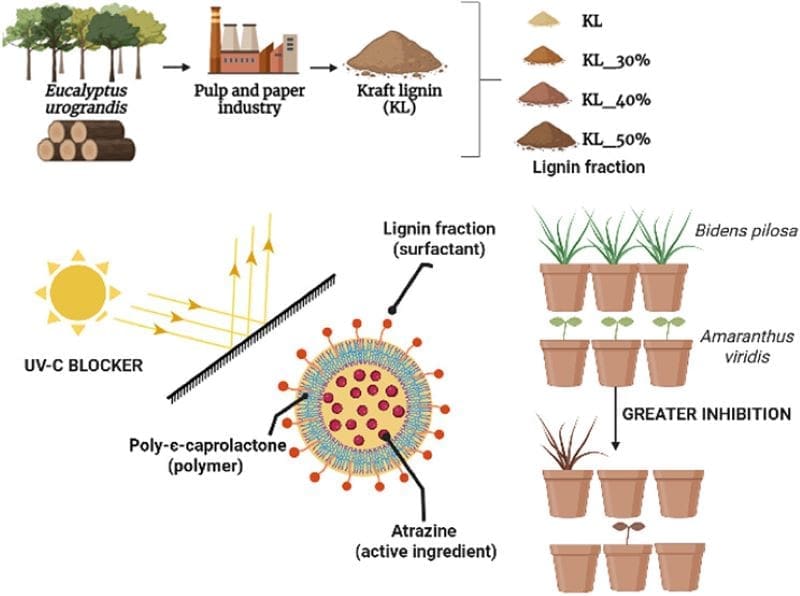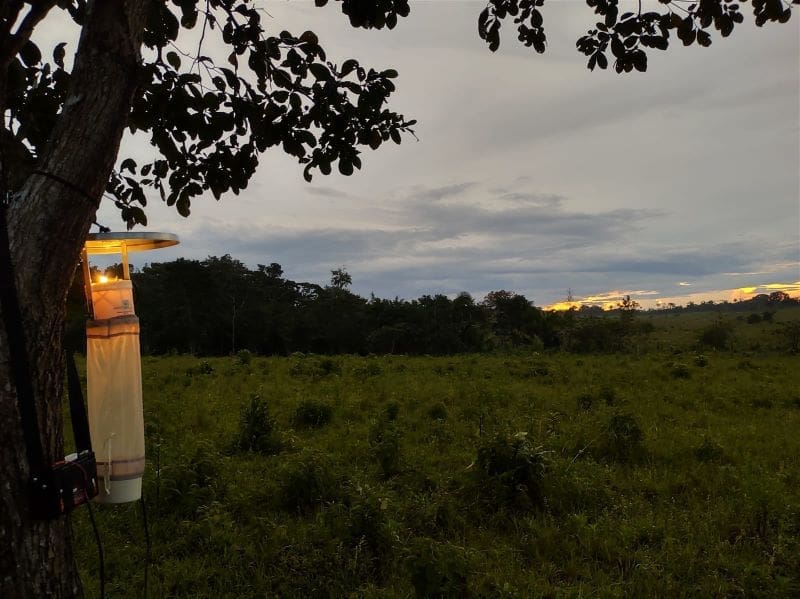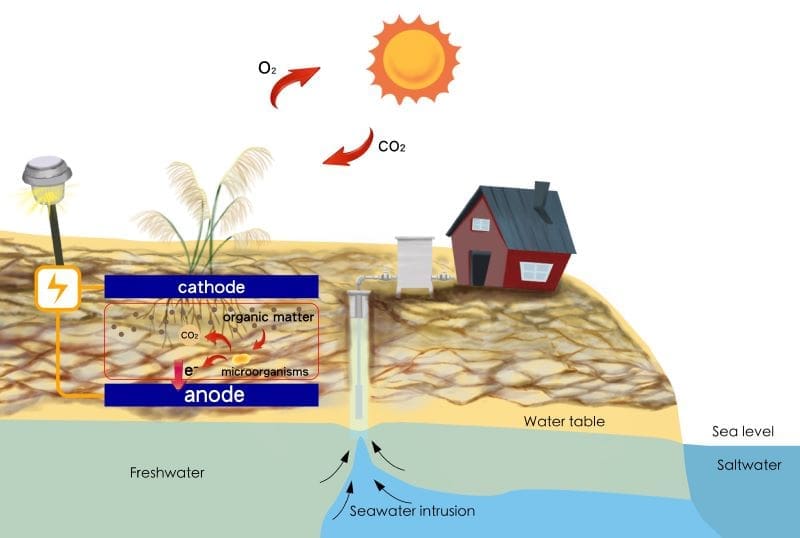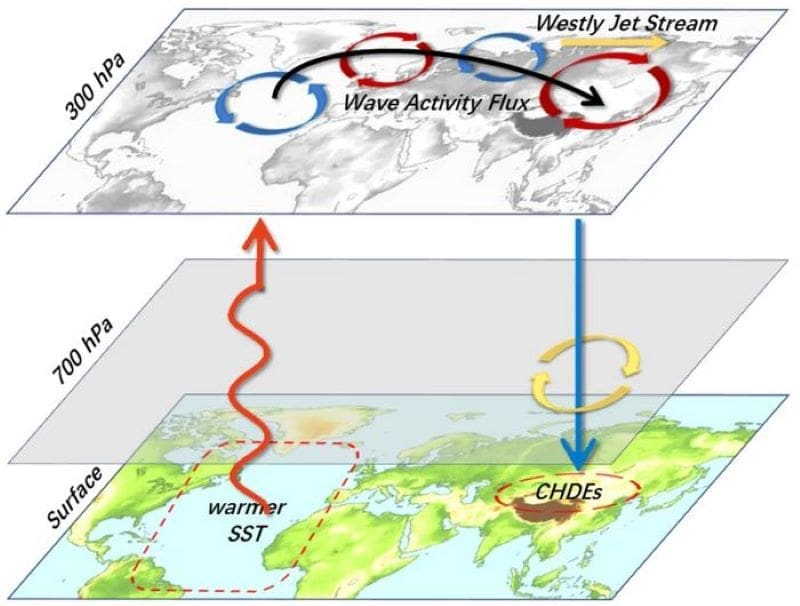Explore the latest insights from top science journals in the Muser Press daily roundup (November 4, 2025), featuring impactful research on climate change challenges.
In brief:
Plant biomass substance helps combat weeds
A study published in the journal ACS Sustainable Chemistry and Engineering and featured on its cover showed that a fraction obtained from lignin, an organic polymer responsible for the rigidity of plant cell walls, was able to improve the performance of nanoparticles with herbicide. The study was conducted by researchers from three research institutions in the state of São Paulo, Brazil: São Paulo State University (UNESP), the State University of Campinas (UNICAMP), and the Federal University of São Carlos (UFSCar).
“Lignin has antioxidant properties and is one of the main components of plant biomass, but it’s still underutilized and often treated as waste from the pulp and paper industry. That’s why our group sought more sustainable ways to add value to this abundant and renewable material,” says Leonardo Fraceto, a professor at the Institute of Science and Technology at UNESP, Sorocaba campus. He is also the Innovation Coordinator at the Center for Research on Biodiversity and Climate Change (CBioClima) and at the National Institute of Science and Technology (INCTNanoAgro). The study was supported by FAPESP through four projects (23/06505-9, 24/01872-6, 24/14149-0, and 23/00335-4).

The substance was obtained from Eucalyptus urograndis, a hardwood tree, and was then subjected to a green process. This process used acetic acid as a solvent to obtain different fractions with distinct structural and chemical properties. Next, nanoparticles were produced using atrazine, an herbicide that combats weeds.
These nanoparticles underwent a series of physical, chemical, and thermal analyses to examine their structure and behavior. “We found that the different lignin fractions have very distinct properties. Some are richer in phenolic groups. Others have a higher molar mass or promote greater thermal stability. These differences directly impact the formation and performance of the nanoparticles,” Fraceto explains.
Some fractions are more effective at protecting polymeric materials (composed of macromolecules, proteins, and cellulose, for example) from ultraviolet ray-induced degradation, while others act as stabilizers in substance release systems. These results demonstrate that lignin is not a single, uniform waste product but rather a material that can be customized for different applications.
According to Fraceto, this finding is significant because, although using lignin as a surfactant is promising for the efficient distribution of active ingredients in agrochemical formulations, several challenges must be overcome. One major problem is the variability in its structure, which can affect its consistency and performance as a stabilizing agent.
In the case of atrazine nanoparticles, using the lignin fraction increased the stability and efficiency of herbicide release. Using specific lignin fractions was crucial to optimizing nanoparticle performance. The developed formulations effectively controlled black jack (Bidens pilosa L.) and green pigweed (Amaranthus viridis L.), demonstrating their potential for sustainable agricultural pest management.
“Not only were we able to use a simple, environmentally friendly process, but we also took advantage of an abundant byproduct in Brazil, opening up possibilities for the bioeconomy,” Fraceto celebrates. “This type of study connects materials science, sustainability, and technological innovation, bringing academia closer to solutions for current challenges, such as developing greener agricultural inputs.”
Journal Reference:
Jéssica de Souza Rodrigues, Amanda de Sousa Martinez de Freitas, André Lopes Ferreira, Anderson do Espirito Santo Pereira, Marcelo Bispo de Jesus, Marystela Ferreira, and Leonardo Fernandes Fraceto, ‘Lignin as a Dual-Function Stabilizer for Protecting PCL Nanoparticles from Photodegradation and Enhancing Atrazine Delivery’, ACS Sustainable Chemistry & Engineering 13 (36), 14844-14859 (2025). DOI: 10.1021/acssuschemeng.5c04472
Article Source:
Press Release/Material by Thais Szegö | FAPESP | CC BY-NC-ND
Malaria risk in the Amazon is higher in regions with intermediate forest degradation
Amid the preparatory discussions for COP30, which also involve health-related topics, a study contributes to our understanding of the relationship between deforestation and the spread of malaria in the Legal Amazon. This region encompasses all nine Brazilian states in which the Amazon biome is found and was established by the federal government for regional development purposes.
The study shows that intermediate forest cover with 50% deforestation increases human cases of the disease and infection rates by Anopheles mosquitoes, particularly the Nyssorhynchus subgenus.
The study emphasizes the need for targeted interventions that integrate vector control with forest conservation due to the persistent association between deforestation and disease. Malaria is transmitted through the bite of an infected female Anopheles mosquito carrying one or more species of the protozoan Plasmodium. The Anopheles mosquito is also known as nail mosquitoes or marsh mosquitoes.
The researchers conducted field collections at 40 sites in Cruzeiro do Sul, a municipality in the state of Acre located at a deforestation frontier. Along with other towns in the Juruá River Valley, the municipality is considered a persistent hotspot for malaria incidence; interventions over the past decade have not been able to interrupt endemic cycles.
The selected areas represent a gradient of forest cover and deforestation levels. The findings were published in the scientific journal Acta Tropica.

“In our research, we found that the highest risk of malaria transmission occurs when there’s a 50% proportion of native forest near housing, settlements, or population centers. The risk is also high when vegetation is fragmented, allowing greater contact between vectors in the forest and humans. On the other hand, it decreases if deforestation is complete, because the environment becomes inhospitable to the vector, or when the forest is restored to levels above 70%, showing the importance of conservation and restoration,” said Gabriel Laporta, the corresponding author of the article and a biologist.
To assess how landscape structure influences transmission, data on mosquito vector abundance and infection rates, as well as malaria cases in humans, were used. “We found it extremely important to collect not only the vectors, but also blood samples from residents. We tested infectivity in both the vector and host groups. This pattern of transmission risk in the middle of the forest cover gradient appeared in both sets,” the biologist explained to Agência FAPESP.
Laporta, a professor at the FMABC Medical School University Center, has been researching malaria for over ten years. FAPESP supported the study through a Young Investigator Grant, an Amazônia+10 Call for Proposals grant, and a doctoral scholarship.
In the project, the scientists aim to better understand the persistent cycles of malaria, Chagas disease, and cutaneous leishmaniasis transmission in the context of deforestation. To this end, they are working with integrated geoprocessing modeling and remote sensing technologies combined with information on the incidence of human parasites and the levels of Plasmodium vivax, P. falciparum, Trypanosoma spp., and Leishmania spp. infection in mosquitoes. In total, the project will involve five years of monitoring, with completion scheduled for 2027.
Step-by-step science
In 2021, a group of scientists, including Laporta, published an article in Scientific Reports with findings from a longitudinal spatiotemporal study based on data collected in rural Amazonian settlements. The study showed a higher risk of malaria associated with deforestation.
Two peaks in vector occurrence were detected: the first, involving Plasmodium vivax, Nyssorhynchus darlingi, and local vectors, occurred between 10 and 12 years after the settlements began. The second peak occurred between 36 and 38 years later; however, local vectors were absent, and the other two types were prevalent.
Another study showed that changes to the Amazonian landscape reduced the overall diversity of mosquitoes, allowing Nyssorhynchus darlingi to become dominant.
Constant battle
Deforestation is one of the main causes of malaria spread in endemic countries such as Brazil. Other causes include changes in prevalent mosquito types, loss of biodiversity, and large infrastructure projects that modify natural landscapes, such as hydroelectric plants, mining activities, and urbanization.
Climate change has exacerbated the situation by creating conditions more favorable to the proliferation of mosquitoes through rising temperatures, combined with intense rains and droughts. Measures that can be taken to address these cases include health surveillance systems, attention to the most vulnerable populations, and rapid responses to natural disasters.

In recognition of the fact that the climate crisis directly impacts population health and the need to integrate these two agendas, the presidency of COP30, which will take place in November in Belém, the capital of the state of Pará, has included health in its thematic days.
“Environmental and public health issues seem far apart, but they’re closely connected. One way to intervene in areas such as those we studied would be to promote sustainable initiatives that provide income for residents. Conserved forests have valuable products, but they tend to be less profitable than opening up the land for pasture or agricultural use. Payment for ecosystem services, through the carbon market, for example, may be an alternative. A conference such as COP30, which brings together government officials and decision-makers, can be an opportunity to discuss how we’ll replace today’s modus operandi,” Laporta comments.
Malaria is considered a global public health problem and is endemic in the nine states of the Legal Amazon. According to the Ministry of Health, the region accounted for 138,000 of the 142,000 cases registered in the country in 2024.
Through the National Malaria Elimination Plan, Brazil has committed to reaching less than 14,000 cases by 2030 and achieving the final goal by 2035.
The study’s researchers warn that eliminating malaria requires effective treatments and comprehensive vector control strategies. They suggest making the environment less favorable to Anopheles vectors by maintaining biodiversity in conserved forest areas as a potential solution. “The combination of these ecological factors with improved treatment protocols can leverage malaria elimination efforts,” they write in the article.
The World Health Organization (WHO) estimates that there were 263 million cases of the disease and 597,000 associated deaths worldwide in 2023. About 95% of these deaths occurred in African countries, where access to prevention, detection, and treatment services is still limited.
Individual prevention can be achieved by using mosquito nets and screens to protect against mosquitoes, as well as repellents. Collective measures include sanitation work, filling vector breeding sites, and improving the living conditions of vulnerable populations.
The disease causes fever, chills, tremors, sweating, and headaches. In severe cases, it can lead to seizures, bleeding, and altered consciousness. In Brazil, patients usually receive outpatient treatment from the SUS (Sistema Único de Saúde), the national public health network.
Journal Reference:
Gabriel Z. Laporta, Denis Valle, Paula R. Prist, Roberto C. Ilacqua, Thais C. Santos, Fernanda P. Madeira, Glauco M. Silva, Andreia F. Brilhante, Melissa S. Nolan, Marcia A. Sperança, ‘Intermediate forest cover and malaria risk in an Amazon deforestation frontier’, Acta Tropica 269, 107757 (2025). DOI: 10.1016/j.actatropica.2025.107757
Article Source:
Press Release/Material by Luciana Constantino | FAPESP | CC BY-NC-ND
Greenhouse gas emission and functional gene dynamics in plant microbial fuel cells with natural and salt-affected soils
Microbial fuel cell (MFC) technology has received considerable attention in the field of wastewater treatment over the past decade. This technology can simultaneously generate electricity and treat wastewater by cultivating electrochemically active microorganisms. However, recent discoveries have shown that MFC systems can be combined with soil to form soil microbial fuel cells (SMFCs), or further combined with plants to form plant microbial fuel cells (PMFCs).
As novel green energy technologies, they can convert organic matter in the soil or organic matter produced by plant photosynthesis into electrical energy through microorganisms. In this study, in addition to exploring the power generation effect, in response to the government’s and international emphasis on carbon reduction, researchers at National Taiwan University also investigated the effects of SMFCs and PMFCs on reducing greenhouse gas emissions from soil. The study is published in Journal of Cleaner Production.

Furthermore, in some southern regions of Taiwan, soil salinization is a serious problem that adversely affects soil ecology and threatens agricultural production. This study also explored the potential of using SMFCs and PMFCs for the restoration of salinized soils. The researchers found that SMFCs and PMFCs can successfully generate electricity in normal soils. The voltage generated in salinized soils is relatively low, but the voltage of PMFCs gradually increases after several months of cultivation.
In addition, they found that SMFCs and PMFCs have different effects on reducing methane emissions in normal and salinized soils, with SMFCs showing better performance in normal soils and PMFCs showing better reduction effects in salinized soils. During the study, they also observed that PMFCs can reduce the soil conductivity in salinized soils; the specific mechanism still needs further investigation.
“Overall, this study demonstrates the application potential of SMFCs and PMFCs in both normal and salinized soils in producing electricity and mitigating greenhouse gas emission,” says Prof. Chang-Ping Yu, corresponding author of the study.
Journal Reference:
Chung-Yu Guan, Kai-Chun Hung, Chang-Ping Yu, ‘Greenhouse gas emission and functional gene dynamics in plant microbial fuel cells with natural and salt-affected soils’, Journal of Cleaner Production 521, 146231 (2025). DOI: 10.1016/j.jclepro.2025.146231
Article Source:
Press Release/Material by National Taiwan University
Atlantic multidecadal oscillation identified as key driver of compound hot drought events over Northern East Asia
A research team led by Qiuxiao Zhu and Dr. Huixin Li from Nanjing University of Information Science and Technology, in collaboration with Dr. Shengping He from the University of Bergen and other collaborators, has uncovered the mechanism by which the Atlantic Multidecadal Oscillation (AMO) modulates interdecadal changes in compound hot drought events (CHDEs) over Northern East Asia.
By analyzing reanalysis datasets during 1940–2022 and conducting Atlantic pacemaker experiments from the CESM1.1 model, the researchers identified two pronounced interdecadal transitions in July CHDEs: a weakening in the mid-1950s and a strengthening in the mid-1990s. These shifts closely align with changes in AMO phases.

When the AMO enters its positive phase, anomalous warming in the North Atlantic triggers Rossby wave trains that propagate across Eurasia. This atmospheric teleconnection causes the northward displacement and intensification of the subtropical westerly jet, strengthens regional high-pressure anomalies, and enhances descending motion over Northern East Asia. These processes suppress rainfall and raise surface temperatures, significantly increasing the intensity and frequency of CHDEs.
The findings provide a new physical perspective for understanding variability in Northern East Asia’s hot droughts and offer a scientific foundation for improving decadal climate prediction and disaster risk management.
Journal Reference:
Zhu Q, Li H, Sun B, He S, Yuan Y, Zeng J, & Tan A., ‘How the AMO influences interdecadal variations of compound hot drought events in Northern East Asia’, Science China Earth Sciences, 68 (9) 2924–2937 (2025). DOI: 10.1007/s11430-025-1642-3
Article Source:
Press Release/Material by Science China Press
Featured image credit: Gerd Altmann | Pixabay




